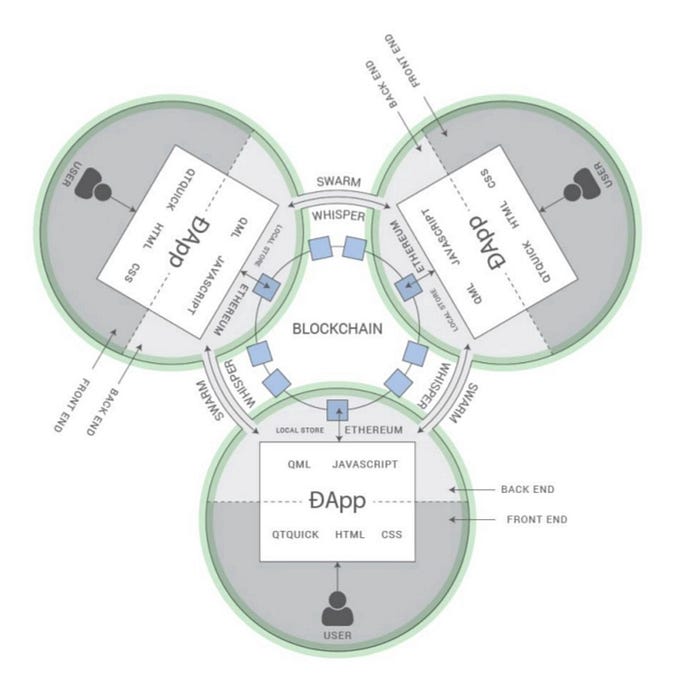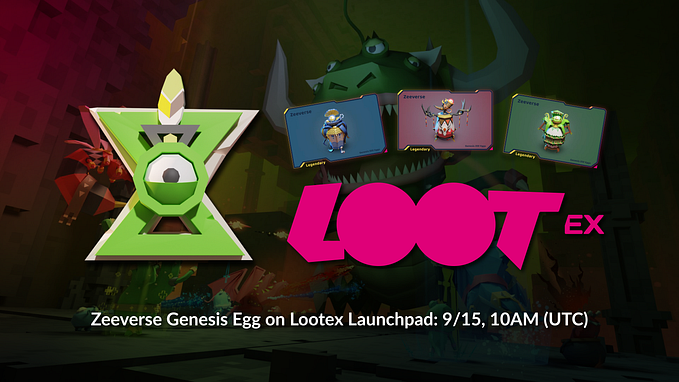Ahmed Rates: The Guyver Adaptions

Sometimes, it’s difficult being a fan of something, particularly if you want to introduce people to what you enjoy. This is especially hard for me as a fan of Yoshiki Takaya’s long-running manga series, Bio-Booster Armor Guyver. Beginning in February of 1985, the story was a mix of horror, sci-fi and action, in which an ordinary high school student named Sho Fukamachi comes across a piece of alien bio-technology. It ends up bonding with him, encasing him in a living suit of super armor known as the Guyver. This results in Sho having to protect both his childhood crush Mizuki, and her big brother Tetsuro, from the evil secret organization Chronos, who pursue the Guyver with their Zoanoids, an army of shape-changing monsters. The manga had some pacing issues at the beginning, but had some iconic and violent battles as Sho (now known as Guyver-1) faced off against many threats such as Lisker (who becomes the villainous Guyver-2), the acid-blooded beast Enzyme, the ever-mutating self-proclaimed “battle creature” Aptom, the team known as the Hyper Zoanoid Team-Five, and the supremely powerful Zoalords like Commander Guyot or Doctor Balcus. He’d gain allies like the anti-hero Guyver-3 (who basically infiltrated Chronos and tried to destroy it from within) and the prototype Zoalord named Murakami. The series would have many twists and turns, from tragic losses for Sho, to a time-skip that shows Chronos taking over the world and the Guyver and his friends becoming the resistance. It’d also suffer some things that I’m not particularly a fan of, like new super-mode transformations and way too many villains. But ultimately, what prevents me from really recommending the manga as your first Guyver series because of its current status. Despite starting in 1985 and still not being finished, it’s only got about 200 chapters (for comparison, Dragonball ran a chapter a week for ten years and ended with 519 chapters). There were several times where the manga would go on hiatus (sometimes due to Takaya’s health), meaning it does feel like the story spins its wheels for too long. And as of right now, the manga is essentially dead, listed as being on permanent hiatus with the story incomplete with the last chapter released in June of 2016 and ending in the middle of a fight. Rumors abound that Takaya has retired from making manga, so I can’t even give it a good review since I don’t review incomplete stories. But I didn’t get into Guyver through the manga, but through several of the adaptions. So in lieu of the manga, let’s look at and rate the various ways you can be introduced to this franchise.
Now, for those new to my Ahmed Rates entries, this isn’t just my opinion on these many shows and movies as individual pieces, it’s also how I feel they rate in relation to each other for this franchise. Even one with flaws can get a top score if it’s an excellent entry. In addition, how well they work as an introduction to the series, as a complete individual story, and as a way to get you to want to check out the original manga will be considered. As such, there not only will be spoilers, but the rating system works like this:
5/5: Absolutely brilliant, highest recommendation
4/5: Still really good, and also recommended, just under the top rank
3/5: Not really great, but still more good than bad, you should enjoy
2/5: Definitely not good, but at least not the worst
1/5: Absolutely the worst, avoid unless you need to complete the set
And with that said, let’s talk about the many adaptions of Bio-Booster Guyver.

Guyver: Out of Control (single OVA special, 1986)
Score: 1/5
Not starting off strong, are we? Coming out a year and a half after the manga started, this 55-minute long OVA is honestly the strangest entry on the list. Even with having so little story to adapt comparatively, it still makes odd decisions to complete drop most of the main cast from the manga that still existed, leaving it to only Sho and Mizuki. Additionally, the character of Lisker who’d become the antagonist Guyver-2 was changed to a woman named Valcuria, which normally wouldn’t bother me too much except that the only reason for the change was so that her Guyver bonding sequence can be done as creepy tentacle anime porn. It’s… very out of place. Even if it didn’t have that piece of unnecessary titillation, the character designs are really weird, the animation can look really cheap, and the action ends up looking off. While the showdown between the two Guyvers is definitely the highlight, along with the music that plays during the big finale sequence, I can’t really recommend this to anyone except as a curiosity after you’ve already become a fan of the series.

The Guyver: Bio-Booster Armor (first OVA series, 1989)
Score: 5/5
Now this is what I’m talking about. And before anyone who collected the English releases in the 90s asks, while the two OVA series were released as a single 12 episode set, it was actually made of two separate 6-episode long series, with the second series being a sequel to this that came out years later. Since that was a separate production, it gets its own entry. Anyway, this is pretty much the best Guyver adaption. Some fans who are purists in regards to the manga criticize how much they changed for it, but the changes work to give a concise adaptation that is the essence of what made Guyver so good to begin with. The story covers the whole of the first story arc, but moved several things from later in the manga up, like the reveal of Guyver-3’s identity, Mizuki learning Sho’s secret as the Guyver, and the introduction and battle with the Hyper Zoanoid Team-Five. What makes it work is that the writing actually explores logically what these changes would do, which basically gives the finale of the arc a bigger and better action sequence and conclusion than the manga had, as well as develop Mizuki to a much better character than she was at this point of the story in the original. It helps that the animation is extremely well-done (the budget was high enough that each episode released a month apart), and the action sequences are glorious in their bloody violence. These six episodes are a perfect distillation of what Guyver is, and it’s the one I’d most recommend to anyone who wants to check it out.

The Guyver (live-action film, 1991)
Score: 3/5
The first live action attempt at the series, this was an interesting entry. An American/Japanese co-production, directed by special effects artists Screaming Mad George and Steve Wang, it ended up aiming for a younger audience than the manga, with George going on to explain that it was a result of both the budget they had as well as the amount of time they had to make it. It does show, as this is the most comical Guyver adaption. This time it follows an American named Sean Barker (Jack Armstrong) who while trying to protect his girlfried Mizuki (Vivian Wu), ends up bonding with the titular bio-booster armor. Mark Hamill is the big star here, playing a CIA agent investigating Chronos. This does cover a decent amount of the opening story arc, and the special effects and action are good for the time. However, the acting is not great, particularly when Armstrong has to voice act for the transformed Guyver. The humor does come off rather juvenile, and creates some tone issues. I do suggest it as a fun cult movie to watch at home, but that’s it. I will say that we haven’t really seen the fully uncut version that released in Japan, but this year will see a 4K remastered re-release that will finally show it to English speaking fans (which is where I got the poster image).

The Guyver: Bio-Booster Armor Act 2 (second OVA series, 1992)
Score: 4/5
And now we get to the continuation of the 1989 series. This one did not have the same writer or director of that series, and the budget was lower, with episodes releasing two at a time as opposed to the first. It covers part of the second major story arc, the Relic’s Point arc, and is specifically focused on the story that has to do with Sho’s father. This does result in the first two episodes trying to squeeze a lot of story in, and the fast pace can be a bit much. It doesn’t help that the animation is not as good, resulting in some weird visuals. The writing and animation starts to get better by the third episode, and by the final episode it actually hits the same highs as the first series. It does have some weird adaptation choices (why not include a villain like Guyot when he was a major part of this story in the manga, and could have filled the void left by the Hyper Zoanoid Team-Five since they were used in the first series?), but some of those do make for better ideas than the manga (like what causes Sho’s psychological block to his transformation in the Guyver), and Mizuki continues to benefit from the improved characterization. Do note that some English releases heavily edit the final episode due to some nudity, which is kind of laughable when compared to the many violent sequences they didn’t bother to edit at all. It also ends on a cliffhanger, so that may frustrate you, but also may (like myself) lead you to jump into the manga to see where it went. An okay sequel, not as good as its predecessor, but definitely worth a watch.

Guyver: Dark Hero (second live-action film, 1994)
Score: 4/5
Also known as Guyver 2: Dark Hero (and apparently as Predator 3 in the Phillipines), this was the more serious live-action film that fans wanted. It still had a low budget, resulting in a direct-to-video release, but it became an even bigger cult hit that its predecessor. It actually got the tone right, earning a much higher age rating due to the violence and gore. We again follow Sean Barker (now played by geek icon David Hayter), still dealing with being the Guyver despite seemingly finishing off Chronos in the last movie, often going off as a vigilante and horrified by the violence of which he’s now capable. When a news story breaks about a werewolf attack near an archaeological dig, one with cave painting identical to images he’s been seeing since bonding with the armor, Sean heads off to the dig, hoping to find answers to what he can do now with the Guyver. Once there, not only will he find answers, but the last remnants of the alien race that created the armor, and the revelation that Chronos is still active, with agents among the dig. Worst of all, he’ll have to face the horrifying possibility of what may happen if the Guyver falls into a Zoanoid’s hands. The action sequences are amazing, the special effects are great, and it is exactly what a live-action Guyver movie should be. The only flaw to me is that you may be a bit lost unless you watch its lesser predecessor. I will say that this was my first Guyver adaption that I ever saw, and was my introduction to the series, so I’d still recommend it even if you haven’t watched the first movie.

Guyver: The Bioboosted Armor (TV anime series, 2005)
Score: 3/5
This was the last adaption of Guyver, covering the first 60 chapters of the manga, making it the most in-depth, and also closely followed said manga. To a lot of purists, this is the best version because of that. Respectfully, I have to disagree. While it does adhere closer, it still comes with its own flaws. It does try to improve on criticisms of the early manga, such as giving Guyver-2 a longer storyline, or adding more scenes to build on supporting characters like Mizuki (who I still think was done better in the OVA series), Sho’s father (definitely one of the strongest points for this entry), or the character of Shizu who acts as a support for our heroes. But in the case of Guyver-2, they don’t really do anything interesting with him. Also, while the art style is really clean compared to early entries (due mostly to the more modern digital art technology), it often comes off as very stilted and lifeless. This is especially pronounced in the fight scenes, which are really lacking in both style and excitement. The series also suffers from really slow pacing, basically creating the opposite problem that the early manga had, and in some cases making it slightly worse. It’s still good as a close adaption to the manga, covering it closer than any other, but it ultimately isn’t as entertaining to watch. Even worse, it just feels like you’d be better off reading the manga instead, especially since this ends on a worse cliffhanger than the others did.
So, that’s my opinion on the various Guyver adaptions. If I had to recommend any as an entry point to show to newcomers, I’d suggest the first OVA series from 1989 and the second live-action movie Dark Hero, and then check out the others at your own pace, along with the manga. Of course, that’s just me. If you’re already a fan of Guyver, let me know what your thoughts are in the comments below.
If you enjoyed this blog and want to help support it, consider a subscription at my Patreon, or head over to your local book retailer (either physical or digital) and buy one of my books.







